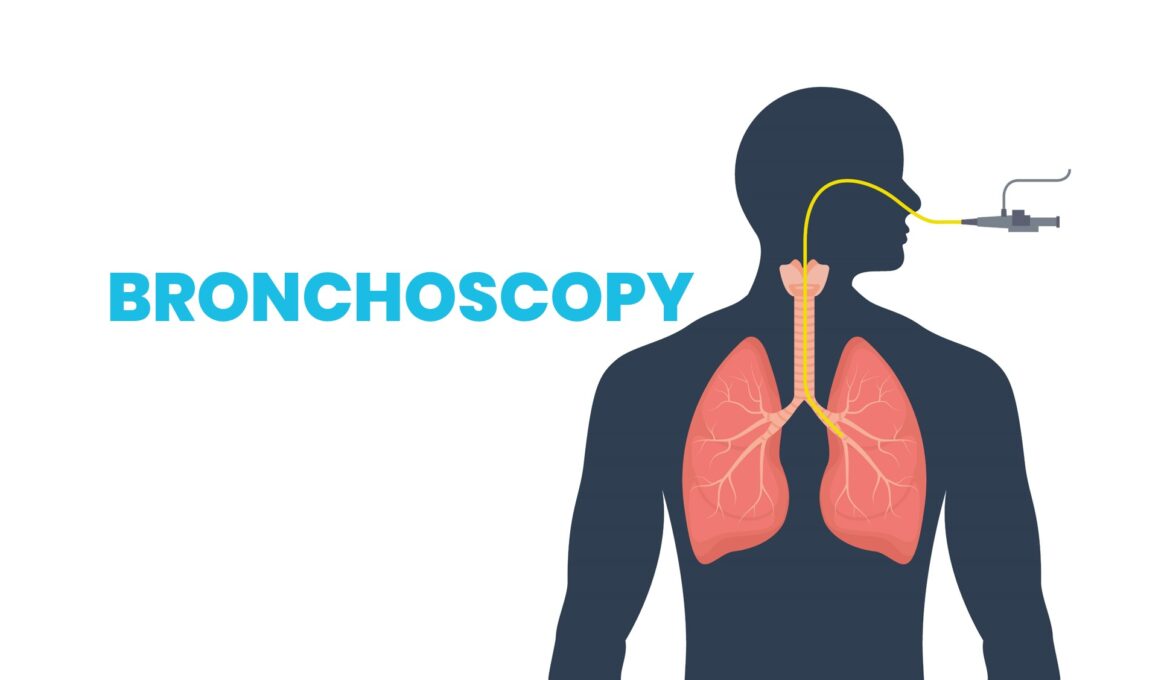
Overview
Flexible bronchoscopy is a procedure that is done to look at the breathing passages of the lungs to see inside the airways of the lungs or to get samples from the lungs.
What are the common indications where the bronchoscopy is done?
Infections: When a person has an infection of the Lungs , bronchoscopy is done to take the samples from the lungs to know the exact cause of infection.
Spot in the Lungs: The commonly called term as spot or abnormal lesion in the x ray or CT of the Lungs. Bronchoscopy is done in those scenario to find out the exact cause of lesion by taking samples from the lesion which is usually examined by a pathologist to know the root cause of the lesion.
Airway blockage and atelectasis: Atelectasis is caused when the airway to a lung or part of a lung is blocked and air cannot get through and lung cannot function normally. This blockage is usually caused by something in the airway such as a peanut or other foreign body, a tumor, or thick mucus and blockage may also be caused by something outside the airway compressing it.
Bronchoscopy allows the doctor to see the blockage and try to sample and/or remove the substance. This helps to open up the airway and lung, especially when other treatments (like airway clearance) have failed .
Bleeding: If some body has coughed up blood , bronchoscopy helps to find the site of origin of bleeding.
If Bronchoscopy is not feasible, what are the other tests to know the same information ?
Other test includes x-rays and CT scans can give some information about the lungs, but bronchoscopy allows the doctor to look at the inside Lungs and obtain very specific samples and at times remove a blockage.
What are the risks of Bronchoscopy procedure?
Bronchoscopy is a safe procedure. Serious risks from bronchoscopy, such as an air leak or serious bleeding, are uncommon (less than 5%). The risk associated with the procedure is as follows:
Discomfort and Coughing: While the bronchoscope is passed through your nose and back of your throat into the lungs, it may cause some discomfort like cough, however you will be given medicine to help with this prior to the procedure.
Reduced oxygen: When the bronchoscope is passed into the airway , it might block the flow of air into the airway causing the oxygen level to drop. This drop is usually mild, and the oxygen level usually returns to normal without treatment.
Lung leak: Airway may be injured by the bronchoscope particularly if biopsy is taken as the lung is already very inflamed or diseased. The procedure could cause an air leak (pneumothorax) in which air comes out of the lung and gathers in the space around it. If there is a large or ongoing air leak, it may need to be drained with a chest tube.
Bleeding: Bleeding can occur after the doctor performs a biopsy. Bleeding can also occur if the airway is already inflamed or damaged by disease. Usually bleeding is minimal and mixed with sputum (phlegm) and stops without treatment.


